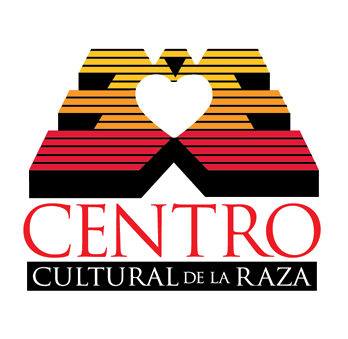In 1970, after utilizing the abandoned Ford Building (Aerospace Museum), community members and artists began attending City council meetings to acquire the site as a center for art and culture. The community was awarded an abandoned water tank in Balboa Park that came to be the Centro Cultural de La Raza.
The Centro has been a sacred space instrumental in Chican@, Latin@, and Indigenous art and culture. Some of today’s most influential artists grew through the Centro: Los Lobos, Culture Clash, Lalo Alcaraz.
A bit of history from the Chicano Archives at SDSU
One woman, Antonia Perez, of nine artists, headed the mural painting project on the outside walls of the Centro Cultural de la Raza. Antonia Perez was responsible for two main sections. The entire wall, 240 by 18 feet, was divided into sections and the artists were responsible for each one. Read More...
Published Works
The Centro has published exhibition catalogues, poetry series and children’s books. It is also referenced in a number of publications such as Made in Aztlan: Centro Cultural de la Raza, Fifteenth Anniversary, among others. The list below is a sample:
- Maize poetry series
- Tula y Tonan children’s book series
- The Border Art Workshop, 1984-1989 Exhibition Catalogue
- The Broken Line/La Linea Quebrada
- La Frontera/The Border, Art About the Mexico/United States Border Experience
- Fragmentos de Barro
- Separate but Assimilated: Latino Immigrant Communities and their Museums
- Rebozos of Love
- Nationchild Plumaroja
- “Immigrants in Our Own Land”: A Chicano Literature Review and Pedagogical ASSESSMENT
- The Bronze Screen
- Postborder City: Cultural Spaces of Bajalta California
- Negotiating Performance
- Globalization on the Line: Culture, Capital and Citizenship at US Borders
- A Companion to CulturalSTUDIES
- The Fence and the River: Culture and Politics at the U.S.-Mexico Border
- Poor Dancer's Almanac
- Race and Politics: Asian Americans, Latinos, and Whites in a Los Angeles Suburb
- Mexicanos: A History of Mexicans in the United States
- The Ethnic Eye: Latino Media Arts
- Chicano Art Inside/Outside the Master's House: Cultural Politics and the Cara Exhibition
- Rethinking Borders
- The Expediency of Culture: Uses of Culture in the Global Era
- Hispanic Spaces, Latino Places: Community and Cultural Diversity in ContemporaryAMERICA
- Under the Fifth Sun: Latino Literature from California
- Anglos and Mexicans in the Making of Texas, 1836-1986
- More Adventures with Kids in San Diego
- Dimensions of theAMERICAS : Art and Social Change in Latin America and the United States
- Lonely Planet Coastal California
- Chicano Drama: Performance, Society and Myth
- The Latino Holiday Book: From Cinco de Mayo to Dia de Los Muertos: The Celebrations and Traditions
- Calling California Home, A Lively Look at What It Means to Be a Californian
- With Other Eyes: Looking at Race and Gender in Visual Culture
- From Totems to Hip-Hop: Poetry Across the Americas, 1900-2002
- Lowrider
- De Paseo: Curso Intermedio de Español
- Feminist Rhetorical Theories
- LOCAL Motion: The Travels of Chicana and Latina Popular Culture
- Barrio-Logos: Space and Place in Urban Chicano Literature and Culture
- Urban Exile: Collected Writings of Harry Gambia Jr.
- Breaking Boundaries: Latina Writing and Critical Readings
- Race-Ingo Art History: Critical Readings in Race and Art History
- A Hispanic View: American Politics and the Politics of Immigration
- Women Making Art: History, Subjectivity, Aesthetics
- CONTESTED Terrain: Diversity, Writing, and Knowledge
- Radical Media: Rebellious Communication and Social Movements
- San Diego: California's Cornerstone
- Contemporary Trends in Landscape Architecture
- Border Writing: The Multidimensional Text
- Celluloid Nationalism and Other Melodramas: From Post-Revolutionary Mexico to Fin De Silo
- MidAmerican
- O Solo Homo: The New Queer Performance
- Chicana Feminisms: A Critical Reader
- Reading California: Art, Image, and Identity, 1900-2000
- Space, Site, Intervention: SituatingINSTALLATION Art
- Other Sisterhoods: Literary Theory and U.S. Women of Color
- Shot inAMERICA : Television, the State, and the Rise of Chicano Cinema

